Introduction :
Cooler Master as a company needs no introduction, they have carved a solid place for themselves in this extremely competitive industry and while not all of their products have been crowd pleasers, what sets them apart is their will to change, to listen, and they keep proving that by releasing newer products which sometimes are radically different from their previous offerings.
Now before we begin with the actual review, I need to say this out loud, I have never seen gaming headsets in good light, reason for that being, well simply that most companies find some cheap OEM to provide them sub par drivers which not only give a few good gaming headsets a bad rep but are also horrendously priced thanks to trends like RGB lighting, virtual surround and over the top looks to name a few.But this new headphone by Cooler Master is definitely a step in the right direction.
Packaging and Build Quality :
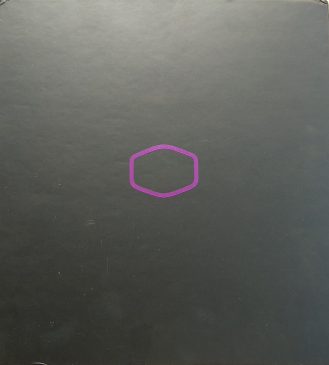
The headphones come in a very minimalist looking box which is part of cooler master’s new branding strategy, they have chosen to go that route and as a result their products and the packaging (at least in my opinion) looks pleasing. There is a muted CM logo on top of the box and opening it reveals a simple foam mesh covering the headphone, the mic and the USB sound card. Very well packaged, nothing much to talk about here.
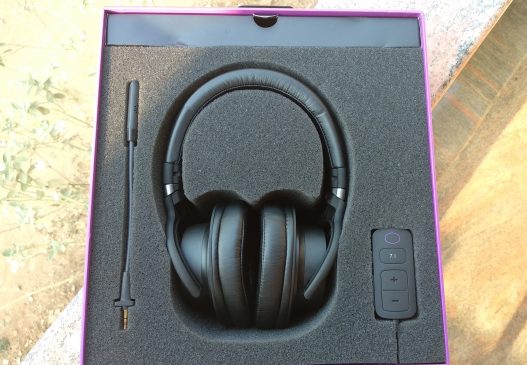
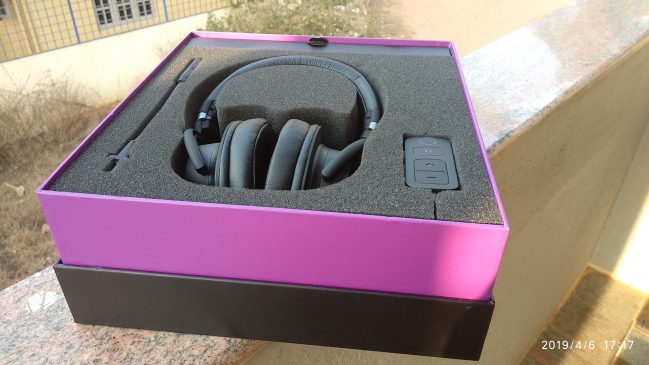
Coming to the build quality, the headband is made up of metal skeleton covered with plastic and soft cushion. The ear-cups are made entirely of plastic but its of good quality and feels quite good in the hand. The MH752 offers 90 degree rotation of the ear cups and a lot of adjust-ability to provide a snug and comfortable fit.
I need to point out how comfortable MH752 is despite the deceiving ear cup size. I have pretty large ears but i still was comfortable wearing them for long duration, although since the cushioning on the cups is pleather, it does become quite hot after a while in Indian Summer.
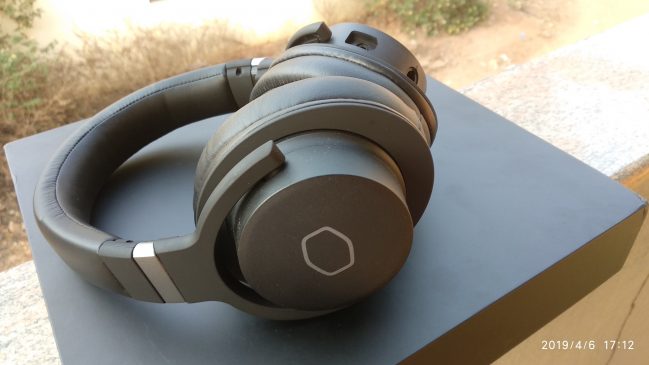
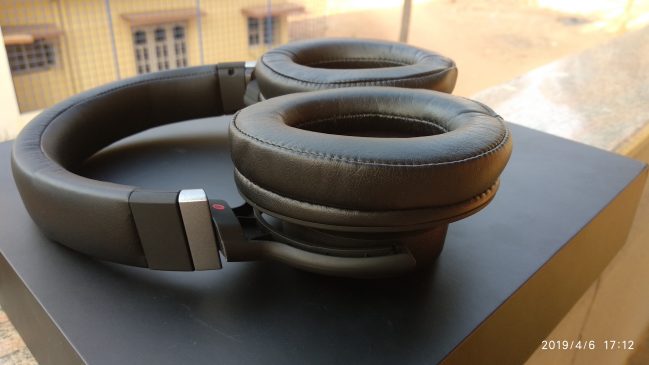
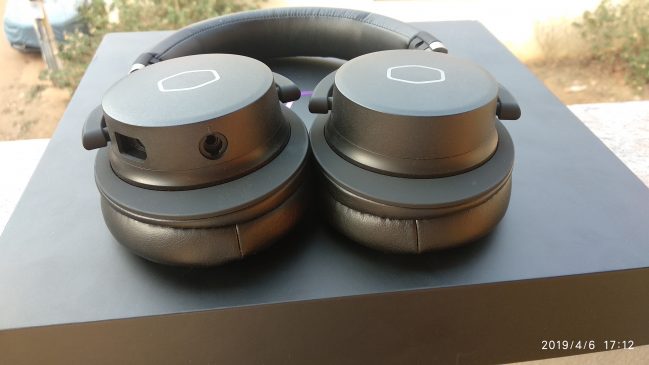
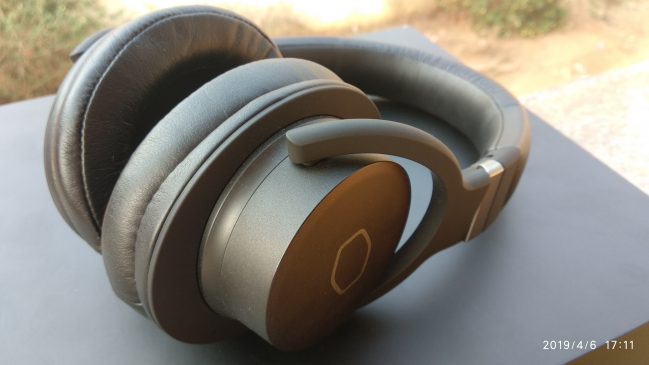
The Mic is also made of the same high quality plastic and offers absolute flexibility to position it any way you want around your mouth. Although i do wish that we had some sort of rotational mechanism to pull the mic upwards while not in use. It is detachable though so that helps with the previously discussed situation.
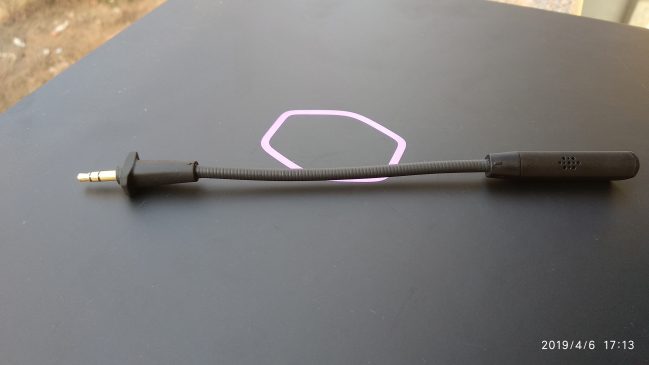
Lastly the USB sound-card is probably the weakest link here, while it is built from that same plastic, it does feel a little flimsy and doesn’t inspire the same level of confidence as the rest of the package.
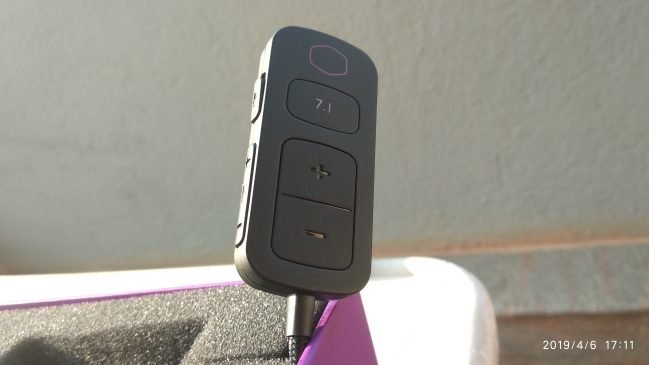
Overall very very happy with the build, it’s also helped by the fact that these are very very light along with being well built.
Sound Quality :
Sound Quality or SQ is what makes or breaks a headset or a pair of headphones in my eyes. Usually, from my experience, i find that manufacturers try to overcompensate for a poor sounding Headset by providing tons of features, Which in my opinion does not help their cause.
It’s sort of hilarious that manufacturers do not understand what makes a good gaming headset. Before i explain further, i want to say that RGB, Surround Sound, Fancy packaging are not things which make a headset apt for gaming.
A good gaming headset should have a good Driver (the speaker which produces sound) and that driver along with the entire ear cup design should be capable of producing a wide enough sound-stage to allow a gamer to accurately pinpoint a source of sound in that virtual 3D space.
Surround Sound implementations are still not at a level where they can outperform a well designed audio Driver which can throw a massive sound-stage and accurately reproduce point sound sources. I will talk more about the surround sound implementation in the next section, now let’s get down to the headset i am looking at today.
Let me start out by saying its one of the best Gaming Headsets i have used till date. In typical Gaming Headphone fashion the headphone has a V shaped sound signature which is not a bad thing in itself, but how the driver reproduces those accentuated frequencies decides whether its a good or a bad thing. And i am glad its very well implemented here and the headphone sounds very energetic and entertaining.
The Mid-Bass (Frequencies starting around 100-200Hz and up-to 500Hz) is quite elevated, giving MH752 a nice and punchy bass response, Explosions and Buck-shots really shine through. Although it saddens me that the Sub-Bass(Frequencies below 100 Hz) is quite rolled-off meaning MH752 does not do very well with the Sub-Bass, but i guess that’s a necessary trade-off needed to get the Mid-Bass elevated to that level.
Mids (Vocals) here are slightly veiled, which means they sound slightly distant and that’s not because MH752 has a huge sound-stage, but because of the V shaped sound signature, when you elevate treble and bass, vocals usually take a hit. But again it’s a sort of compromise which every manufacturer has to decide about and based on the target audience has to settle on. Considering MH752 is built for gaming, i will not reduce any marks for the veiled midtones.
By now you must have a rough idea of how the treble response must be, as expected, there is a clear upper-mid/lower-treble (Frequencies between 6 KHz all the way up to 10 KHz) elevation going on here, giving MH752 a slightly energetic and airy presentation, this also gives an impression of picking up more details than its actually retrieving. In short it’s a good thing and the tuning of the treble is perfect from a gamers’ point of view.
Sound-stage on MH752 is quite apt, it’s not massive but its not very congested either, it does its job well, but i do hope that in a revision of this product it can be improved. 1 simple way of doing that is by increasing the size of the ear-cups giving the driver some more breathing room and using appropriate damping material to help in the absorption of stray audio waves within the driver. Which should increase the sound-stage while also reducing interference.
The dynamic response of MH752 is mediocre but still a lot better than most gaming headsets, Dynamics are a measure of how well a headphone copes with varied levels of loudness, let’s say a very faint instrument is playing in the background while a loud drum is beating at the forefront, then how well the headset can keep both of those instruments in the limelight is how we judge Dynamics
Impedance is quite nominal and MH752 is very easy to drive, which is a good thing considering not all gamers may want to invest in a dedicated AMP. But for those of you who are curious whether MH752 improves considerably with a good DAC/AMP, i have some lukewarm news here for you folks, MH752 does improve but the improvement is not worth spending more than the headset itself to invest in a good discreet DAC/AMP setup. The accompanied USB sound card should be more than enough to drive these to their full potential.
Lastly, let’s do a mini comparison, i will not go into too many details, but since audio reviews are so subjective and there is no right or wrong way to interpret someone’s opinions, a good comparison can make the review more relatable and easy to understand for those who have had an experience with either of the headphones/headsets.
DT 770 vs MH752 : Cutting to the chase, the MH752 gets close but is still limited by certain design decisions due to its target audience to achieve a sound signature as refined as the DT 770.
But it’s clear that the sound signature of the DT 770 was the inspiration behind this driver and it shows, the MH752 is a great headset which hits way above the mark in terms of establishing a perfect compromise between being a good gaming headset and having a good sound signature.
To be specific, DT 770 has a lesser mid bass emphasis but extends really deep thanks to its awesome sub bass reach, Likewise on the treble front the DT 770 forgoes some of the upper-mid elevation for a much extended treble response. Sound-stage wise there is really no comparison, the DT 770 is miles ahead. Overall DT 770 is more refined and has better bass, treble extension, sound-stage and dynamics.
You might be thinking by now whether this is a MH752 review or DT 770s, well i wouldn’t blame you, as the audiophile in me often gravitates towards something which sounds better while ignoring the other aspects. In MH752’s defense, it comes with a decent and clean sounding USB sound card, an omnidirectional detachable mic, a detachable cable as well as modern and muted looks, and is very portable and quite comfortable, all this adds up in making the MH752 one of the most compelling headsets and a well rounded product in its own right.
Add-ons (Mic, 7.1 USB Sound Card) :
The bundled Omnidirectional modular Mic is very clean sounding and i got great feedback from my friends while playing Dota 2, Borderlands and Brawlhalla. It’s very clear sounding although i do wish it picked up higher frequencies a tad better to sound crisper than it does right now.
The USB sound cards which are bundled with such headsets are usually and arguably just average sounding simply because a good DAC is a complicated piece of electronics and is not cheap to manufacture, traditionally most such sound cards have sounded garbage not just because they were particularly bad, but because of the headset’s bad drivers combined with a ton of post processing being done to the audio pipeline by those custom DAC implementations in order to make those headsets sound appealing and bassy.
Considering the fact that i am happy with the sound card bundled with the MH752 as its very clean sounding and unless you engage the 7.1 option it does no amount of post process on the audio stream. As i had mentioned before in the Sound Quality section. For MH752, the bundled USB sound card does justice and i would have no qualms about using it on a daily basis.
The 7.1 Surround on the other hand is not something i will advise anyone to ever use, all these pseudo surround implementations are “FAKE” and they do not exactly help with positional audio, all they do is post process the audio and artificially enhance the sound-stage. In short people like to assume or claim rather than Software EQ’ing and post processing is a great way to uplift a headphone’s performance ceiling, but unfortunately they ignore the fact that it induces quite audible distortion, now whether they are able to perceive it or not is dependent on a lot of other factors but the fact remains that audio improvement should come from driver improvements and not from software, as these software are not engineered too well to be fault free.
Maybe i am being too picky here but i don’t like software meddling with my audio and morphing it in anyway. But that’s my opinion and your opinion might differ.
The sound card comes with a lot of functions mapped to physical buttons, like volume up or down, muting and unmuting the mic as well as mic gain up or down.
Wrap Up :
To conclude, this is one of the better gaming headsets available on the market today and I can wholeheartedly recommend it to anyone who would be willing to sacrifice a little bit of sound quality for a lot of convenience and comfort.
The only complain I might have here is that the underlying driver which is a Takstar Pro 80’s derivative is capable of more and a redesign of the ear-cups can help it open up and provide a larger sound-stage.
I am not too fond of rating a headphone as sound is so subjective but if I were to look at the cost and compare it to other gaming headset around that price point I would probably rate it an 8 or a 9 out of 10. Which is saying a lot considering i would not have given a gaming headset more than 4-5 a couple of years ago.

